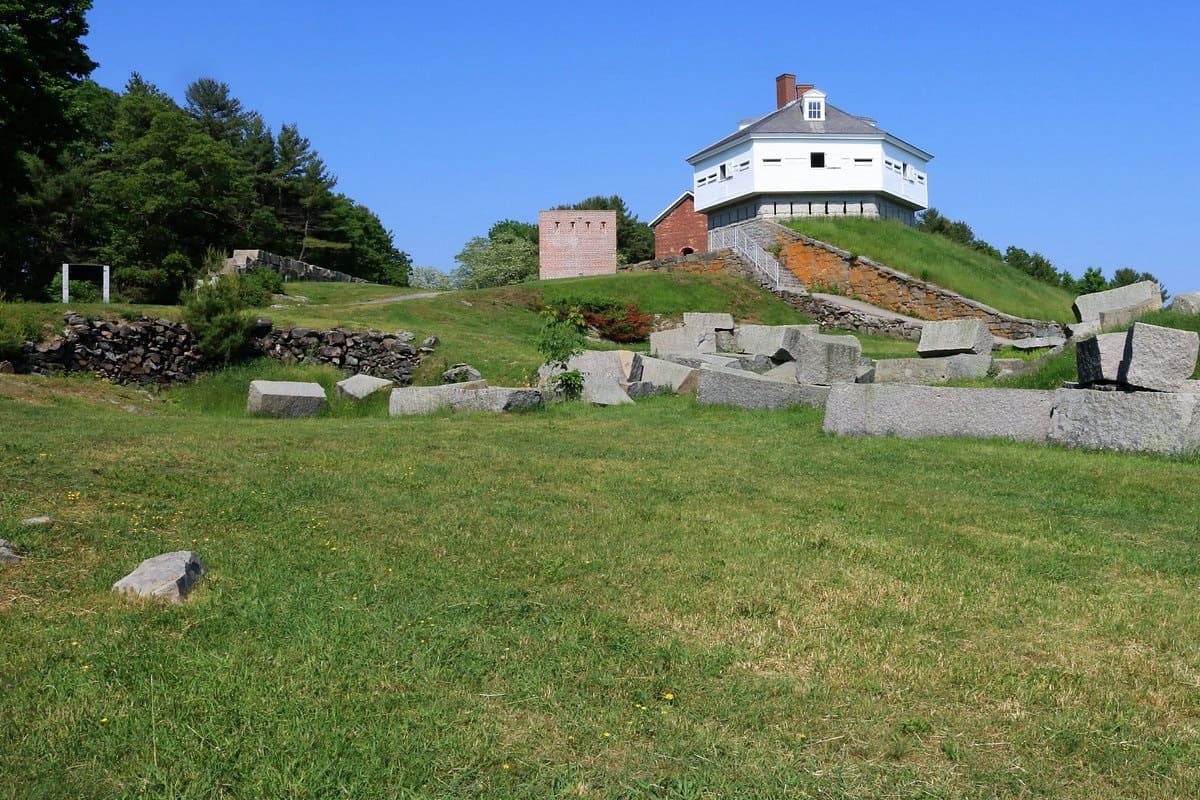Unveil Fort McClary’s Rich History At Kittery Point

Have you ever wondered about the stories behind old forts? Fort McClary at Kittery Point offers a glimpse into America's past. Built in the early 19th century, this historic site has witnessed many key events. Named after Major Andrew McClary, a hero of the Battle of Bunker Hill, the fort stands as a tribute to his bravery. Visitors can explore the blockhouse, granite walls, and scenic views of the harbor. Whether you're a history buff or just looking for a unique day trip, Fort McClary provides an educational and enjoyable experience. Ready to step back in time?
Discovering Fort McClary
Fort McClary, located at Kittery Point, Maine, offers a fascinating glimpse into America's past. This historic site, named after Major Andrew McClary, a hero of the Battle of Bunker Hill, has stood guard over the Piscataqua River for centuries. Let's explore some of the key spots within Fort McClary that make it a must-visit destination.
The Blockhouse
The Blockhouse is the centerpiece of Fort McClary. This massive wooden structure, built in 1844, served as a defensive stronghold. Its thick walls and strategic design made it nearly impregnable.
- Ground Floor: The ground floor housed supplies and ammunition. Visitors can see how soldiers stored and managed their resources.
- Second Floor: The second floor provided living quarters for the soldiers. It offers a glimpse into the daily lives of those who defended the fort.
- Observation Deck: The top level served as an observation deck. From here, soldiers could spot approaching ships and potential threats.
The Granite Walls
The fort's granite walls are a testament to 19th-century engineering. These walls, constructed in the 1840s, were designed to withstand cannon fire and other attacks.
- North Wall: The north wall offers a panoramic view of the Piscataqua River. It's a great spot for photos and reflection.
- South Wall: The south wall features several gun emplacements. Visitors can imagine the fort's defenses in action.
- East Wall: The east wall connects to the blockhouse. It provides insight into the fort's overall layout and design.
The Parade Ground
The Parade Ground was the heart of Fort McClary's daily activities. Soldiers drilled, trained, and prepared for battle here.
- Drill Field: The drill field is where soldiers practiced their maneuvers. It's easy to picture rows of troops marching in unison.
- Flagpole: The flagpole stands tall in the center of the parade ground. It symbolizes the fort's role in protecting American sovereignty.
- Barracks: The barracks, located near the parade ground, housed the soldiers. These buildings give a sense of the fort's bustling military life.
The Powder Magazine
The Powder Magazine was a crucial part of Fort McClary. This small, sturdy building stored the fort's gunpowder and ammunition.
- Exterior: The magazine's thick walls and small windows were designed to minimize damage in case of an explosion.
- Interior: Inside, visitors can see how gunpowder was stored safely. The careful organization ensured that the fort's defenses were always ready.
The Guardhouse
The Guardhouse served as the fort's security hub. It was the first line of defense against intruders.
- Main Room: The main room of the guardhouse was where soldiers monitored the fort's entrance. It was a place of vigilance and readiness.
- Holding Cells: The guardhouse also contained holding cells for prisoners. These small, stark rooms remind visitors of the fort's role in maintaining order.
The Officer's Quarters
The Officer's Quarters provided more comfortable accommodations for the fort's leaders. These buildings reflect the hierarchy and structure of military life.
- Living Room: The living room was a space for officers to relax and plan. It offers a contrast to the more spartan conditions of the enlisted men.
- Bedrooms: The bedrooms in the officer's quarters were more spacious and private. They highlight the differences in rank and privilege within the fort.
The Fort McClary Trails
The trails around Fort McClary offer a chance to explore the natural beauty of Kittery Point. These paths provide a peaceful counterpoint to the fort's military history.
- Woodland Trail: The woodland trail winds through the forest surrounding the fort. It's a great way to enjoy the area's natural scenery.
- River View Trail: The river view trail offers stunning vistas of the Piscataqua River. It's a perfect spot for a leisurely walk or a picnic.
- Historical Markers: Along the trails, historical markers provide additional context about Fort McClary's past. They enrich the visitor experience with fascinating facts and stories.
Discover Fort McClary's Rich History
Fort McClary at Kittery Point offers a unique glimpse into America's past. This historic site, named after Major Andrew McClary, played a crucial role in coastal defense from the Revolutionary War through World War I. Walking through the fort, you can see the evolution of military architecture and technology. The blockhouse, granite walls, and cannons tell stories of bravery and strategic importance.
Visiting Fort McClary isn't just about history; it's also about enjoying stunning views of the Piscataqua River and the Atlantic Ocean. The park provides a perfect setting for picnics, photography, and peaceful walks. Whether you're a history buff or just looking for a beautiful place to spend the day, Fort McClary has something for everyone. Make sure to add this gem to your travel list when exploring Kittery Point.

